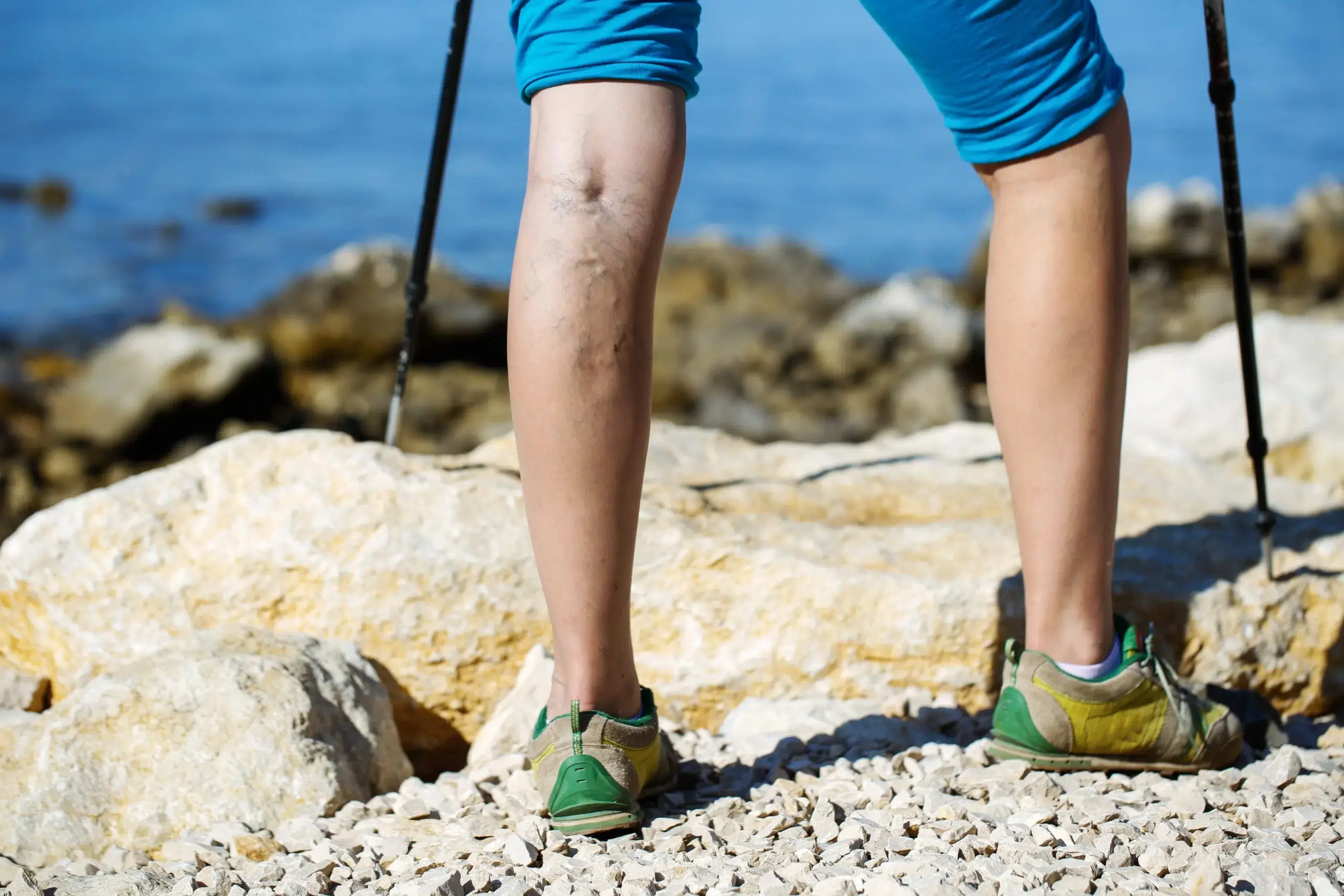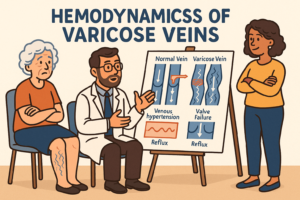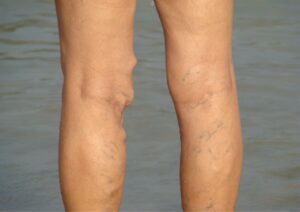Table of Contents
If you have noticed the unsightly twisty and bulging veins in your legs, you may be wondering if they are varicose veins and when to worry about them.
Varicose veins can become a serious health problem because they can cause pain as well as discomfort.
Knowing how to identify them, what causes them, and when it is important to seek medical help for treatment could save your leg from further damage.
Keep reading to learn more about varicose veins— including when it’s time to start worrying!
What causes varicose veins?
Varicose veins may appear as a result of the walls of your vein becoming weakened, causing pressure to increase and for them to expand.
This can cause valves within the affected area to be unable to function properly, leading blood flow in that vessel to become sluggish, which then causes swelling and bulging from inside out – making them visible on the surface.
Multiple factors have been identified as potential contributors, including age-related degeneration or prolonged standing/sitting etc
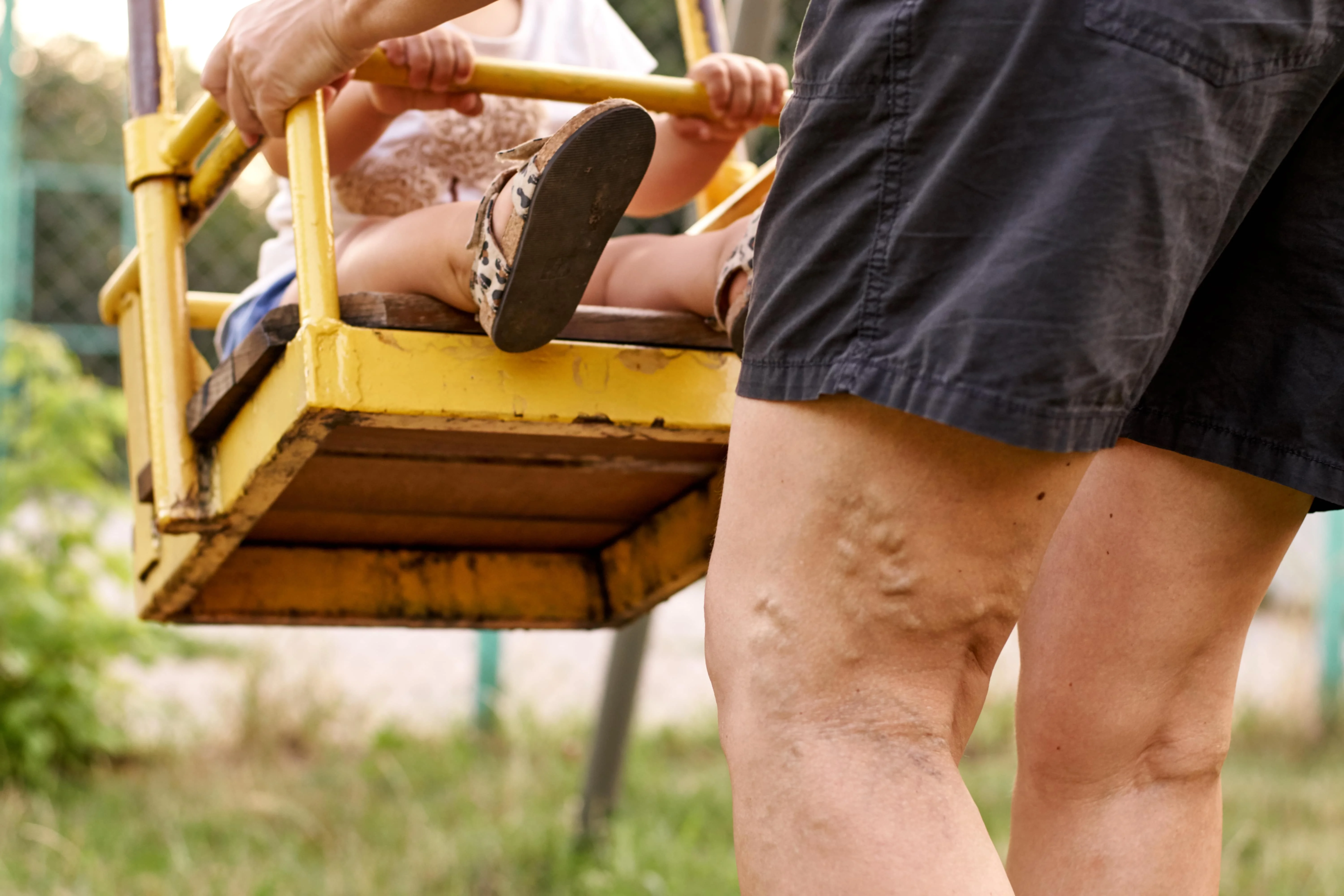
What are the symptoms of varicose veins?
Varicose veins can be an unsightly nuisance, manifesting as gnarled blue or violet markings beneath the skin’s surface.
Symptoms associated with this issue may include aching legs and swollen ankles, coupled with visible beauty concerns like reddish patches on one’s feet and/or discoloration of their lower limbs.
What are the risk factors for varicose veins?
Varicose veins can be caused by a range of different factors, including weight and age. Typically inherited in families, varicose vein syndrome increases the pressure on blood vessels to create large visible channels close to skin surfaces.
Although there is risk of clot formation with this condition, it usually goes away without serious complications when treated quickly should any bleeding occur.
However, particular attention should be taken if you are overweight or obese; older; female; active leg injuries, such as pregnant women or smokers taking oral contraceptives & hormone replacement drugs – which could worsen symptoms and cause thrombosis in your blood vessels.
Varicose veins can cause discomfort and cause even bigger problems. Because they are visible, they may make the audience nervous.
What are the health consequences of not having varicose veins treated?
Varicose veins can be uncomfortable and sometimes serious problem.
If left untreated, they may worsen in time, leading to skin issues that could result in the permanent damage of leg bones, as well as increasing the chance for clotted blood vessels. But what causes these unsightly – yet dangerous – varicose veins?
There are a variety of factors, including lifestyle choices, such as smoking or sitting/standing for extended periods.
Age also plays its part due to weakened valves within your vein walls.
What are the complications of varicose veins?
Varicose veins can be a serious medical condition, often marked by bleeding or open sores that appear discoloured.
Varicose veins are generally harmless, but if left untreated for some time they can cause substantial issues. Blood flow is inhibited when varicose veins begin to form and this could lead to several long-term health problems that might be avoidable with early intervention.
While varicosity alone does not always cause clotting, doctors should carefully examine patients for any signs so prompt treatment is available if needed.
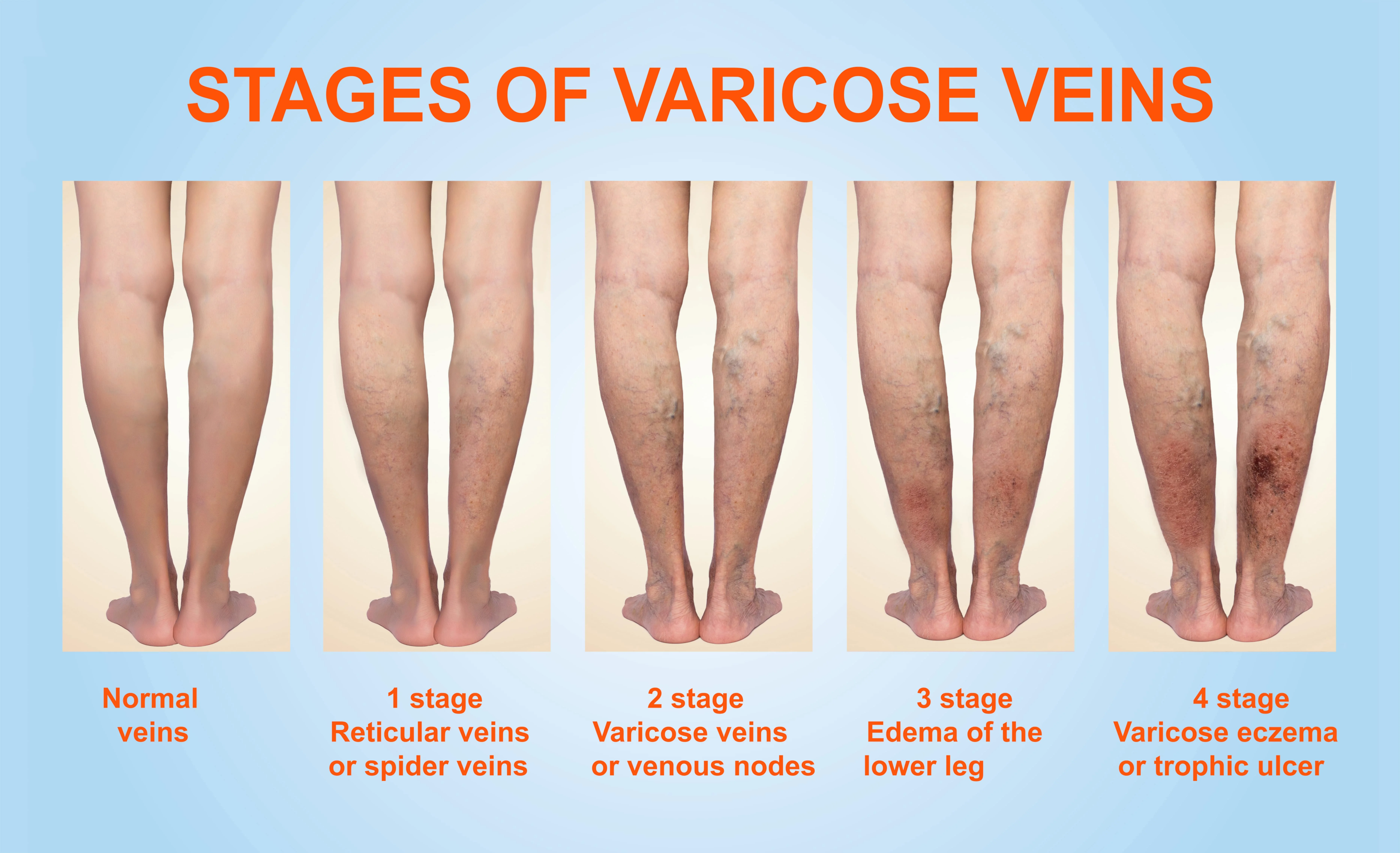
When are varicose veins serious?
Varicose veins may seem like a minor inconvenience, but they can lead to much more serious issues including ulcers, bleeding, DVT, chronic venous insufficiency and discoloration when left untreated.
Bleeding
Varicose veins that are close to the surface of your skin have the potential to bleed if your leg is cut or if it is bumped. It could be tough to put a halt to the bleeding.
It is recommended that you lie down, lift one leg, and apply direct pressure to the incision. If this does not stop the bleeding, you should seek medical attention as soon as possible.
Blood clot
It is possible for you to develop illnesses such as the following: if you develop blood clots that form in veins that are placed just below the surface of your skin (superficial veins):
Thrombophlebitis is characterised by an enlargement and inflammation of the veins in the leg.
A deep vein thrombosis, often known as a DVT, is a condition that can cause pain and swelling in deeper veins in the leg, and it can also lead to significant complications such as pulmonary embolism.
Chronic venous insufficiency
Extreme varicosity is often an indication of chronic venous insufficiency which affects blood circulation all the way through spider veins and up to your heart and increases the risk of of further worsening of the varicosities as well as increasing the risk of ulcer.
Ulcer
When the veins in your legs do not push blood back up to your heart as effectively as they should, you run the risk of developing venous ulcers, which are open sores. As this happens, pressure builds up in the veins because blood begins to pool there. Increased pressure and excess fluid in the affected vein area might lead to the formation of an open sore if the condition is not managed.
The leg, namely the area above the ankle, is the most common site for venous ulcers. Healing time for this kind of wound can be rather lengthy.
Can varicose veins be cancerous?
Although varicose veins are a common source of discomfort for many, the good news is that they pose no risk of developing cancer.
What does it mean when my varicose veins hurt?
Varicose veins can be more than just an aesthetic problem. If you’re feeling persistent pain or discomfort from prevent varicose veins, it’s important to seek medical attention. With enlarged and painful varicosities there could be underlying issues like blood clots or open sores that require treatment from a specialist.
What does varicose vein pain feel like?
Varicose vein pain can range from an itchy feeling around a vein to burning or shooting pains in the lower leg.
The discomfort is often exacerbated when standing for long periods of time, making even mundane tasks like getting dressed or going up stairs difficult and uncomfortable.
Should I be worried if my varicose veins hurt?
Varicose veins can often be more than just cosmetic concerns.
While some may experience no pain and discomfort, others might feel soreness or cramping in the legs, which could indicate an underlying condition that needs to be addressed by a medical professional.
If you have any additional symptoms, such as swelling of the lower back or leg region, restlessness at night time, and/or restless leg syndrome, it is best to take precautions for your health’s sake–seek medical advice from your doctor if necessary!
How can I stop my varicose veins from hurting?
Taking certain steps can help relieve symptoms of the condition, including minimising swelling in those troublesome veins.
Take regular breaks to move around and promote blood flow. Compression stockings are an ideal way to support your vein walls when you need extra help during prolonged periods of standing or sitting – even if it’s not on a flight! Wearing them helps reduce the pooling of blood in weakened valve areas, potentially preventing veins from enlargement.
To reduce the unpleasant symptoms of varicose veins, it’s important to elevate your legs and use a cold compress or ice pack. Additionally, stretching and exercising can help relieve pain by allowing for more efficient fluid movement in the legs. Taking some time out of your day to give yourself these treatments will have you feeling much better!
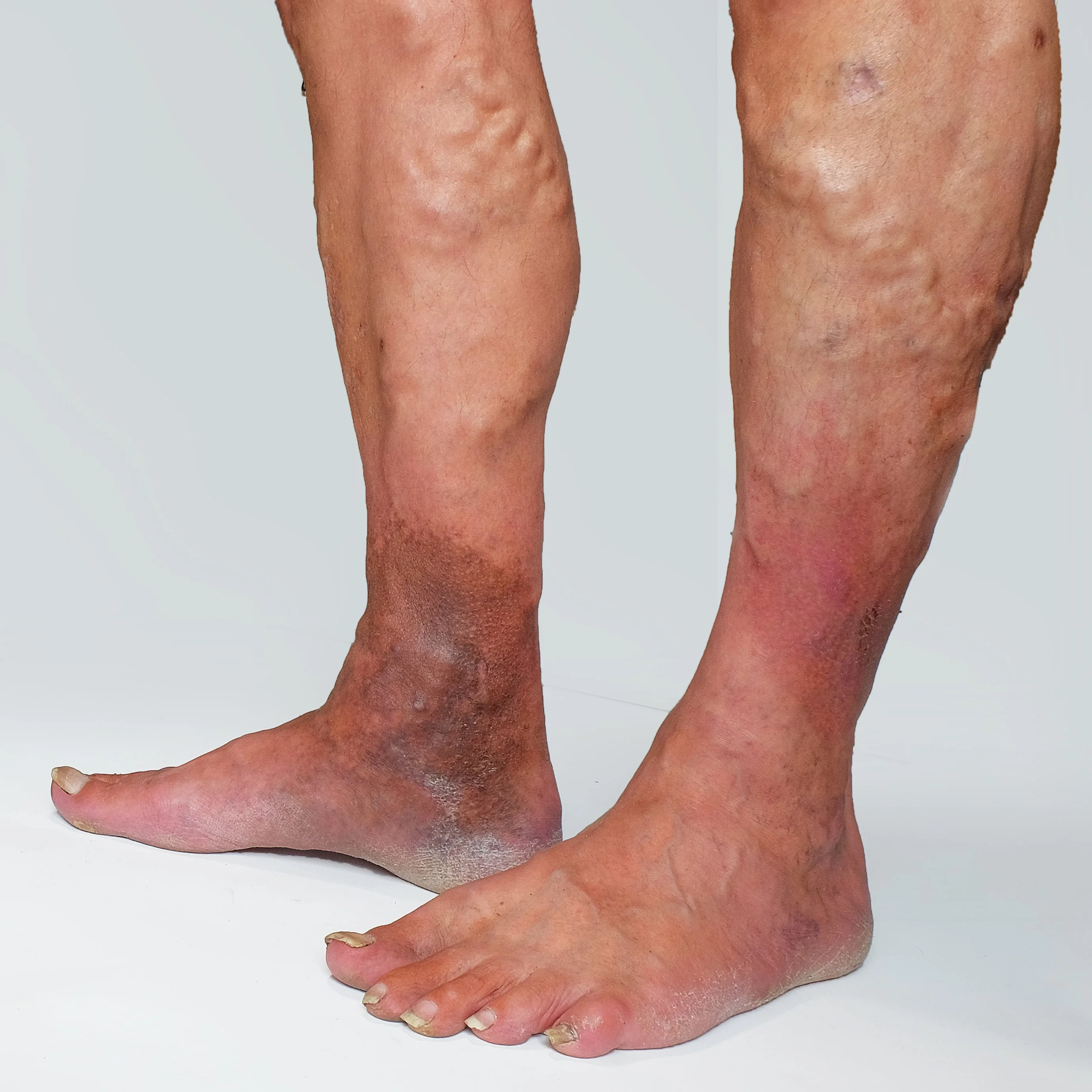
Do varicose veins mean poor health?
Varicose veins may be visually unappealing, but they can also pose serious health issues. Not only are these bulging and twisted veins uncomfortable to live with, their presence could cause the person discomfort in more ways than one – from physical symptoms such as pain and swelling to psychological problems due to feeling self-conscious about visible signs of poor health.
How do I know if I have a blood clot in my varicose vein?
Blood clots in vascular veins or deep veins can cause serious vascular issues and require prompt medical attention. Swelling, tenderness, redness, warmth to the touch—or a combination of these symptoms—are usually indicators that you may have experienced a blood clot in either your top leg veins or arm region. If this is suspected, it’s important to consult your doctor as soon as possible.
When should I talk to my doctor about varicose veins?
For those suffering from varicose veins, regular visits to the doctor are essential.
Left untreated, these swollen and enlarged veins can cause discomfort and even worsen over time – which is why lifestyle changes or home remedies alone may not be enough for relief.
Minimally invasive treatments exist that allow your physician to help you manage symptoms effectively and safely – so take action now by talking with them about a possible solution!
What is the treatment for varicose veins?
Although no treatment can be used against varicose veins diagnosed with vascular diseases they can improve the appearance of them and relieve pain.
A vein doctor can provide an accurate diagnosis and recommend treatments to heal your condition.
Each method is tailored specifically for you, based on severity, location and size.
Ultrasound guided sclerotherapy
Ultrasound guided sclerotherapy seals off affected veins under ultrasound guidance using a special solution that irritates the walls inside, while allowing blood flow to be redirected through other pathways in order for healing to take place naturally.
Endovenous laser ablation, radiofrequency ablation and vein glue
Those procedures are three revolutionary treatments for varicose veins. With ultrasound guidance, the vein doctor/Phlebologist will insert a fibre or catheter into your problem vein, before activating either thermal energy to seal it closed or injecting a special form of ‘glue’ that bonds with the walls of the vessel wall – giving you back smoother skin in no time!
Summary
Varicose veins are a common condition marked by enlarged and twisted veins usually visible in the legs.
They can cause an array of symptoms, including pain, itching, dryness, fatigue and night restless legs.
To ease such discomforts at-home, one should consider avoiding prolonged sitting or standing postures; wear compression socks; elevate your feet; apply cold compresses or ice packs to affected areas, as well as stretch regularly through exercise routines.
However, bear in mind that these practices only offer temporary relief – medical attention is necessary for developing varicose veins and vein treatment, which may include ultrasound-guided sclerotherapy, Endovenous laser ablation, among other methods commonly used depending on each patient’s specific case!
References
https://www.mayoclinic.org/diseases-conditions/varicose-veins/symptoms-causes/syc-20350643
https://www.hopkinsmedicine.org/health/conditions-and-diseases/varicose-veins
https://my.clevelandclinic.org/health/diseases/4722-varicose-veins
https://www.healthline.com/health/are-varicose-veins-dangerous
https://www.betterhealth.vic.gov.au/health/conditionsandtreatments/varicose-veins-and-spider-vein

